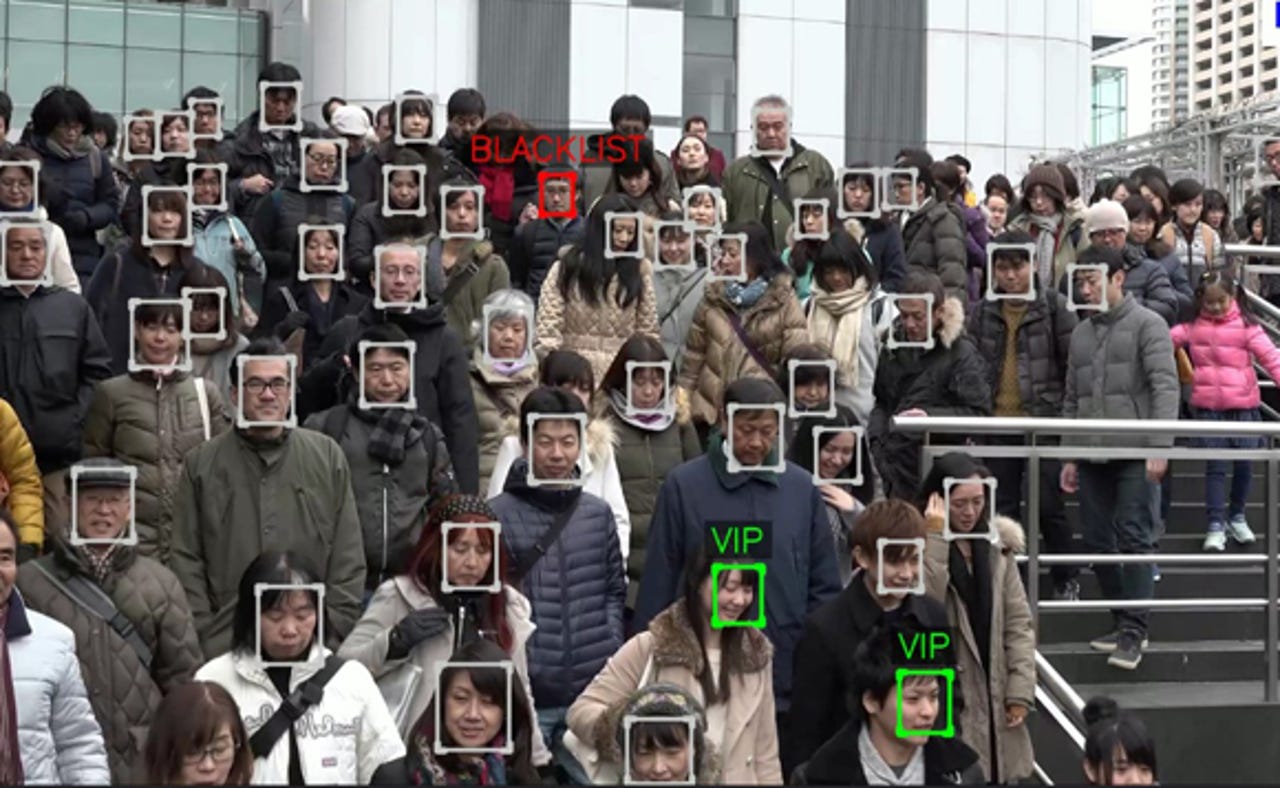Georgia rolls out NEC's facial recognition technology across major cities


NEC's Video Face Recognition Technology
NEC Corporation has announced its advanced surveillance system has been rolled out across major cities in Georgia, including the nation's capital Tbilisi.
The surveillance system uses NEC's facial recognition software for video called NeoFace Watch, which checks images captured by CCTV cameras in real-time against offender databases and "watch lists" for faster detection of "suspicious individuals".
According to NEC, using video images from standard cameras for face recognition requires advanced techniques since images are influenced by environmental conditions such as camera location, image quality, lighting, and subject size, in addition to the behaviour of subjects, such as their walking speed, face direction, and sight line.
To achieve "reliable" face recognition of a video image, NEC said it developed feature point extraction technology that enables the identification of an individual even if their face is partially hidden or the image is taken from different angles.
NEC's facial recognition software also uses deep learning technologies to identify individuals by a low resolution face image captured by a distant camera.
"By offering city surveillance systems that are enhanced with facial recognition technology, we are contributing to proactive crime prevention and efficient criminal investigations," said Tomoki Naka, managing director of NEC Telecommunication and Information Technology.
This surveillance system, which began operation in June, was introduced as part of Georgia's "Safe City, Safe Region, Safe Country" program with the goal of improving public safety.
400 CCTV cameras were installed across major cities in Georgia, under the directive of the Ministry of Internal Affairs of Georgia, and "tens of thousands" more will be added in the future.
NEC's facial recognition technology is also being used by the South Australian police force to identify persons of interest and missing persons. However, the South Australian government said in September last year that the technology's capacity to identify people on real-time CCTV footage would not be used initially.
The South Australian government's decision to deploy facial identification follows the Northern Territory's implementation of the technology in September 2015.
Earlier this week, the Australian Minister for Immigration and Border Protection Peter Dutton announced that a new AU$22.5 million, three-year contract with Vision-Box Australia will initially see 105 new smartgates rolled out across Australian airports, enabling passengers to be processed using facial recognition and eliminating the need for passports.